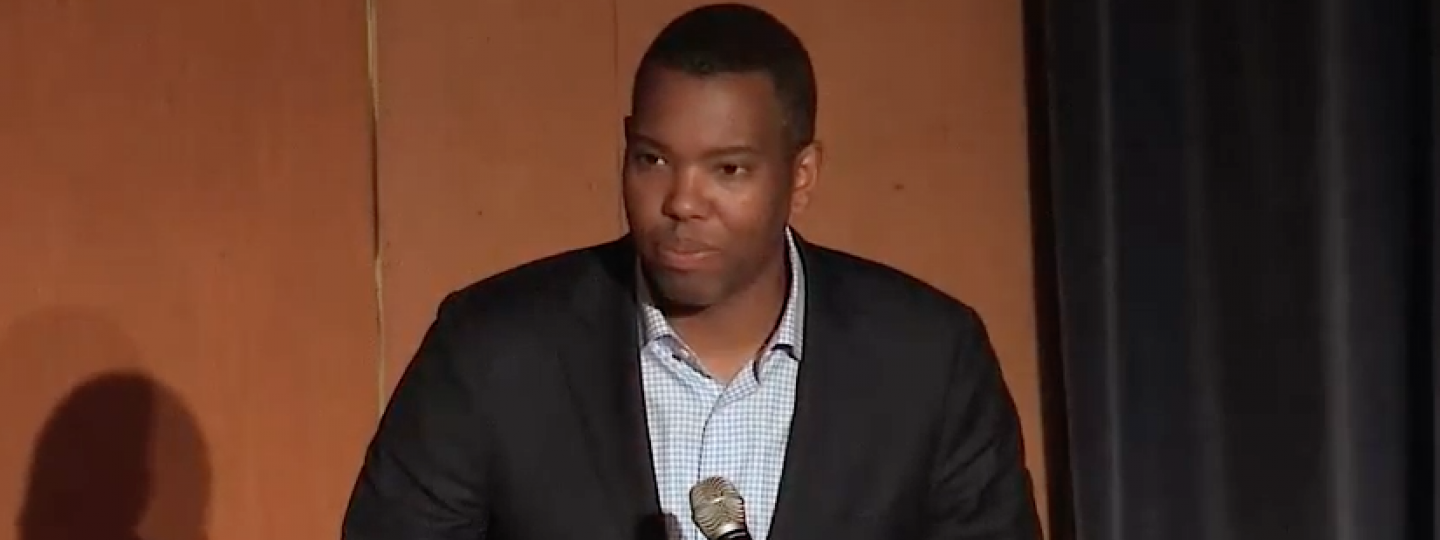In the 2016 election, which age ranges of white supporters did Trump win? Which economic brackets? And which gender? If you answered all, all and both, you are correct. If you did not, what does your mistake say about the ability of journalism to paint an accurate picture of reality?
One of the most sweeping and thoughtful critiques of the media comes in Ta-Nehisi Coates’ just-released book, "We Were Eight Years in Power." Coates argues that journalists missed an essential truth when we diminish Trump’s support among whites.
“Trump won white women (+9) and white men (+31),” writes Coates. “He won white people with college degrees (+3) and white people without them (+37). He won young whites, ages 18–29 (+4), adult whites, age 30 to 44 (+17), middle-age whites, age 45 to 64 (+28), and senior whites, age 65 and older (+19).” Trump also won among every economic bracket of whites, writes Coates, drawing on findings from Edison Research.
Coates argues that after the recent election, journalists lessened the consequences of whiteness and by extension, white supremacy. The reason why journalists discount the enormity of Trump’s support among whites is because to do otherwise would call into question the American self-image of goodness. This is a similar argument to the one Coates made in his writings about the shootings of unarmed black men: Many white Americans need black victims to be guilty because it protects an image of a fair America.
This misperception grips even thoughtful, enlightened writers like Nicholas Kristof and George Packer, Coates writes, and he suggests that the mainstream news media suffers from widespread delusion about whiteness. Can a democratic nation’s free press operate under a mass delusion about race?

To answer this question, let’s travel back in time to the pinnacle of post-Civil War white supremacy: 1892. That's the year that lynching of African-Americans peaked in the United States. On March 10, 1892, the New York Times reported that three African-American men were “literally shot to pieces” by a white mob. One of the lynched men, Thomas Moss, was a friend of Ida B. Wells, a woman who was born the daughter of slaves and who became a journalist and anti-lynching crusader.
Moss and his associates, said the New York Times, were lynched because they had shot three white “Deputy Sheriffs.” In fact, as Wells quickly learned, a white mob surrounded a black-owned business and fired into it. The three African Americans defended themselves against the mob, firing back and injuring three men, none of whom were “Deputy Sheriffs.”
“This is what opened my eyes to what lynching really was,” wrote Wells in her autobiography. “An excuse to get rid of Negroes who were acquiring wealth and property and thus keep the race terrorized and ‘keep the nigger down.’” This led Wells to embark on one of the most courageous journalistic crusades in American history. Journeying across the South, Wells investigated lynching cases and discovered a disconnect between the perception of blacks as lawless and thus deserving of mob action, and the reality that many black victims were clearly innocent.
Wells was not only uncovering facts; she was operating against the deep-seated racism embedded in the reporting of the day. In an article in 1894, the New York Times referred to white lynch mobs as “savages,” but in the same paragraph stated that “The crime for which negroes have frequently been lynched, and occasionally been put to death with frightful tortures, is a crime to which negroes are particularly prone.” The crime the Times was alluding to was rape. The mainstream press believed that black men were lynched because they were raping white women.
In fact, through her investigations, Wells uncovered four truths about the “black rapist” trope. First, rape was not the stated cause in most lynching cases. Second, when rape was charged, it was generally done so after the lynching took place as an ex post facto justification. Third, in most cases where a sexual relationship was in fact real, it was generally between consenting adults. And fourth, the root cause of lynching could often be traced to economic competition.
For her efforts, Wells was met with incredulity and anger. In 1894, the Times said that Wells was a “slanderous and nasty minded mulattress, who does not scruple to represent the victims of black brutes in the South as willing victims.” Despite all her courageous reporting, Wells could not break through a national narrative that protected a vision of white benevolence.
Even the great and otherwise enlightened Frederick Douglass told Wells that until he read her evidence to the contrary, he too was troubled by “lasciviousness on the part of Negroes,” Wells recalled in her autobiography. While Douglass and other African-Americans learned from Wells’ exhaustive reporting, white America clung to the myths. Twenty years after Wells finished her investigations, the blockbuster "Birth of a Nation" told a story a heroic Ku Klux Klan defending the innocence of white maidens against lascivious black brutes.
We live in different eras, and 2017 is not 1892. But parallels exist.
If Coates is right, Trump’s advocacy of white privilege and his erasure of Obama are the central features of his presidency. Imagine for a second that Trump’s perceived advocacy of white rights is not considered by his supporters to be a bug, but a feature.
That would explain why his outrageousness never seems to hurt his base. If many among his wide, white base voted for a racial realignment, then the wackier Trump is, the more muscular a white supremacist he could be.
A recent article in BuzzFeed reveals the extent that the so-called Alt-White radicals, in coordination with members of Trump’s team, promoted a white supremacist agenda. Coates believes that we have failed to grasp the brutal consequences of broad white support of President Trump.
“Every white Trump voter is most certainly not a white supremacist, just as every white person in the Jim Crow South was not a white supremacist,” Coates writes. “But every Trump voter felt it acceptable to hand the fate of the country over to one.”
When a writer as careful and probing as Coates tells us that we might be suffering from a widespread delusion, we should pay attention to the charge and understand that historical precedent suggests it is possible, that journalism as a whole can suffer from a widespread insensitivity to racial issues.
What should journalists do today? First, unlike the mainstream journalists of the 1890s — who rejected charges of bias — we should use the charges of Coates and others to goad ourselves to examine our perspectives.
When the media of a majority culture sees the world, it often perceives it as race-neutral, the “color of water,” to borrow a phrase, used in a different context, in James McBride’s best-selling memoir. But today’s journalists, with less overt racism and far more access to different perspectives, need to face the issue of race forthrightly.
The second thing today’s journalists should do is to connect the dots. The 1890s saw a relentless string of lynchings, and the era’s press was better at listing the horrors than finding the golden threads.
Journalism has often been a better strobe light than a searchlight. But when we list Trump’s endless tweets, proclamations and imbroglios, we could do a better job of seeing them as pieces of a whole.
When Trump maligns an American judge of Mexican heritage; defends neo-Nazis; attacks two Gold Star families, one Muslim and one black; or views Puerto Rico’s population as being too lazy to help themselves after a hurricane, we must avoid seeing these as distinct incidents.
Connecting the dots of white supremacy would challenge journalistic objectivity and require a level of self-awareness that is difficult to achieve, but reporters, above all else, are charged with creating a true picture of the world. And we must not avoid grappling with all the racial issues that hide in plain sight.






